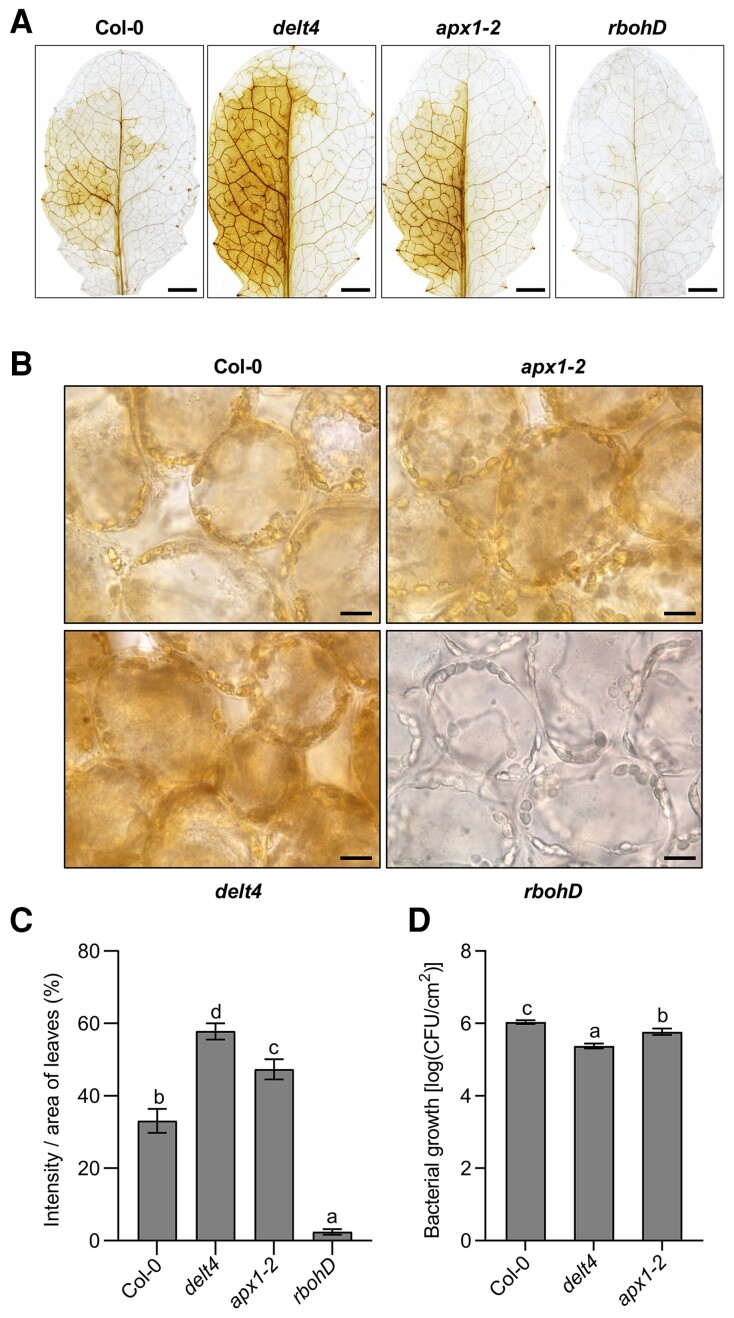Figure 4.
The apx1 mutants show increased effector-triggered accumulation of ROS, as detected by 3,3′-DAB. A, Images of representative leaves after DAB staining. The seventh to ninth leaves of 4-week-old Col-0, delt4, apx1-2, and rbohD plants were infiltrated with Pseudomonas syringae pv. tomato (Pst) DC3000 (avrRpt2) at an OD600 of 0.003, with MgCl2 as the control. Bacterial suspensions were infiltrated into the left side of the leaf and the mock control (MgCl2) was into the right side. The leaves were collected 10 h after infiltration and stained with DAB solution. ROS production was visualized as dark-brown precipitates in the detached leaves. Scale bars, 100 μm. B, The subcellular distribution of effector-triggered ROS accumulation. Images were taken from the left half of DAB-stained leaves in (A) under microscopy. Scale bars, 10 μm. C, The intensity of brownness from DAB-stained leaves in (A). DAB staining per unit area of leaves was quantified using the ImageJ software. Data are shown as the mean ± SE (n = 10). Different letters above the bars indicate significant differences (P ≤ 0.05, one-way ANOVA). The experiment was repeated 3 times with similar results. D, apx1 mutants showed enhanced resistance against Pst (avrRpt2). Leaves derived from 5-week-old plants with the indicated genotypes were inoculated with Pst (avrRpt2) at an OD600 of 0.0001. The bacterial population in the leaf was determined 3 dpi (day postinoculation). Data are presented as the mean ± SE (n = 9). Different letters above the bars indicate significant differences between different genotypes (P ≤ 0.05, one-way ANOVA).

